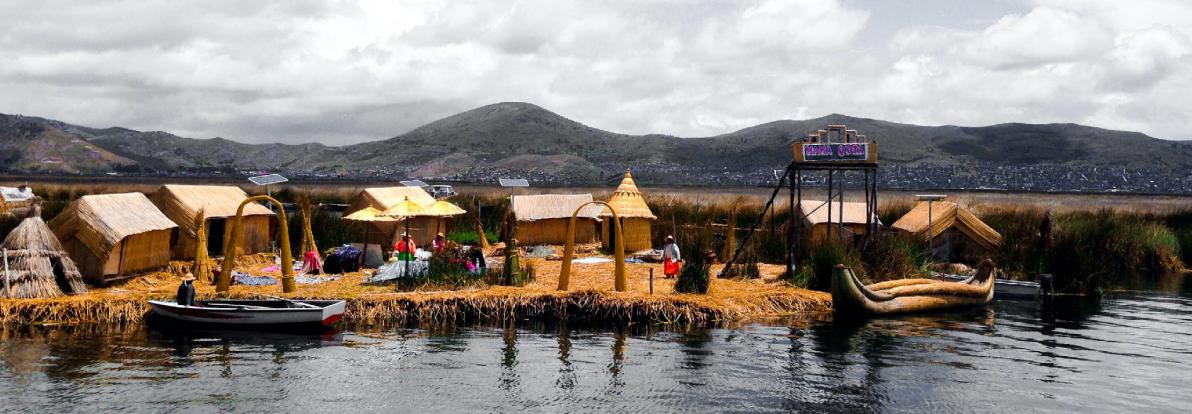
Little By Little One Walks Far - A History of Baptist Missions Work in Peru
The Peruvian proverb, “Little by little one walks far”, could be applied to the gospel work Baptist Missions has been part of in the country of Peru over the last 90+ years. Little by little, Christ has been proclaimed, churches have been planted and under God’s wisdom and grace the gospel reach in the country has grown and flourished.
In 1925, one year after commissioning the Irish Baptist Foreign Mission, the Baptist Union of Ireland consisted of 43 churches (3,358 members). Humanly speaking, it seemed highly unlikely that this small group of churches could make any meaningful impact on the people living in the most remote regions of South America. But in God’s kindness, this was exactly what was to happen over the next century as He began a work through Irish Baptists in Peru.
1920's & 1930's
By the end of the 1920s, the first steps of Irish Baptists serving in Peru were taken. IBFM had seconded a couple in Peru, begun investigations into work in Argentina, sent two workers from Ireland to Peru and employed its first local Peruvian worker. 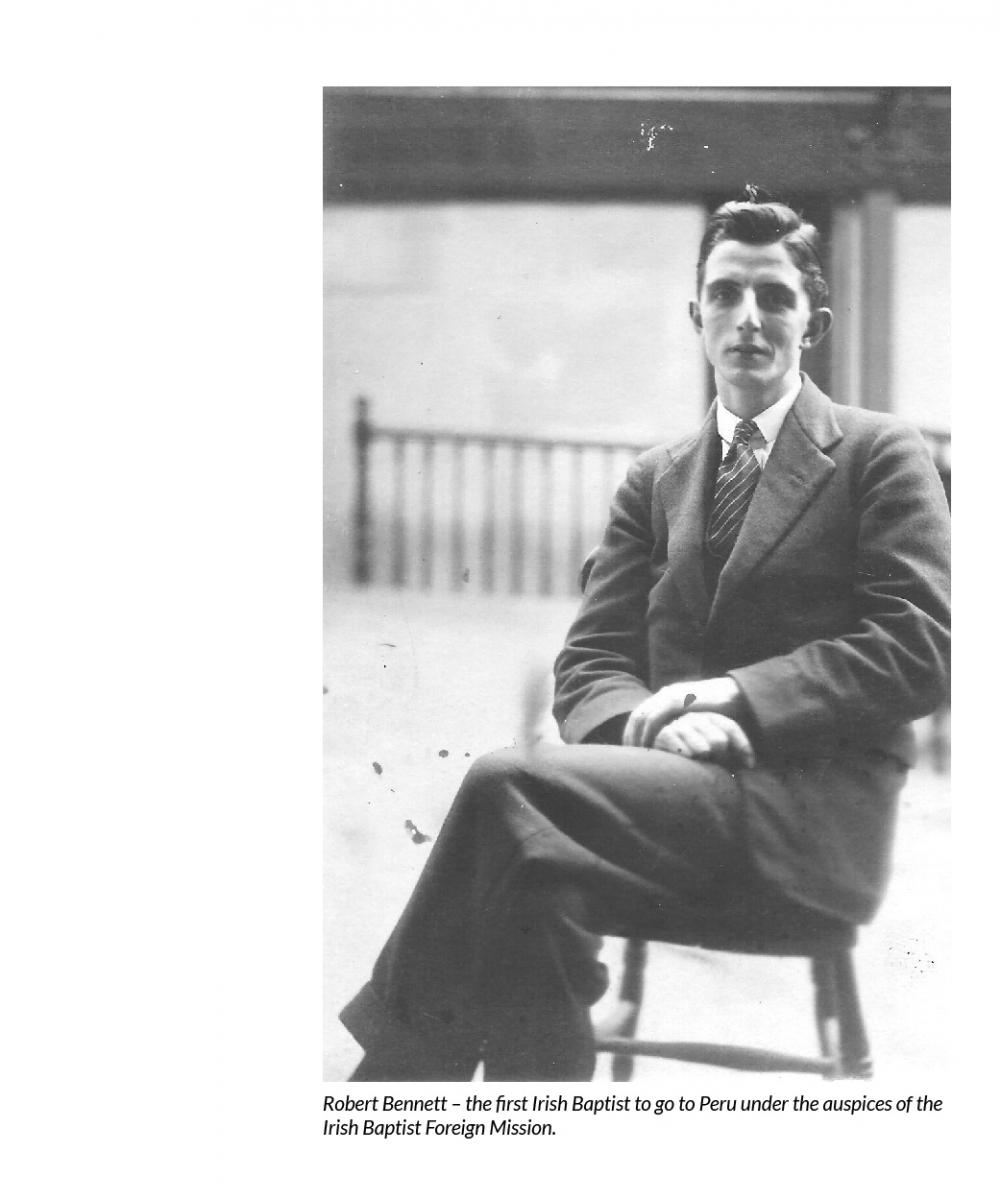
The 1930s were turbulent times, beginning in the shadow of the Wall Street Crash and ending with the declaration of war on Nazi Germany. The IBFM would be affected by both events. There was also turbulence within the Mission itself as new workers were sent to the field, while the committee back home deliberated about where exactly the field should be!
Inevitably, there were growing pains as the committee was gaining perspective of the needs in Peru (and Argentina) and dealing with growing personnel, who themselves had differing ideas as to where the Mission should focus its efforts. Despite these growing pains, the drive and compassion for those in spiritual darkness was evident.
Bill Creighton and Bertie Bennett travelled vast distances, risking their lives to meet people, share the gospel and inform the committee back home to enable them to make wise decisions. Robert Hosford was active during this period in Argentina. He showed great skill in strategic thinking and desired to use local believers to reach their fellow countrymen. Under his influence, the IBFM employed a significant number of South Americans by the end of the decade.
In April 1934, the Creightons and the Reids were asked to move further south to Puno. This is noteworthy as Baptist Missions have worked in the southernmost Departments of Tacna, Moquegua and Puno ever since.
1940's & 1950's
The 1940s was a decade of great hardship for many people, particularly those across Europe as World War II reached its height. Although the war had little impact on the land of Peru, the IBFM workers still faced great difficulties. This was perhaps most notable in the life of the first single Irish woman to join the Mission’s staff, Nurse Sloan. It is reported that she began her work in Ilave in 1941 with nothing but a saucepan as her only piece of equipment. She was unswervingly generous and loving. Unsurprisingly her sacrificial living made her something of a legend among Irish Baptists and Peruvians alike.1
The staff team on the field in Peru was seriously depleted in the 1940s. This was exacerbated by the stepping down of Fred Gracey (Pastor of Cork Baptist Church, 1910-1950)after serving faithfully for 24 years as the Mission’s Secretary in Ireland. Gladly, the tide began to turn toward the end of the decade with new recruits being sent from the Missionary Training School. This was supplemented by growing support for the work at home through the new monthly news bulletin.

It was in the 1950s that the first wave of post-war recruits arrived on the field. The McManuses, Mitchells, McVickers and Sloans joined the Reids, Creightons and Nurse Sloan. Later in the decade the Thompsons also made it to Peru.
The number of Peruvian believers significantly grew in this time as the Union of Baptist Churches in South Peru was formed in 1950. It quickly became effective in evangelism and planting churches. Throughout the 1950s churches were planted in Puno, Ilave, Yunguyo, Tacna, Tarata and Moquegua.
The growth was more than just numerical though, as was seen at the Annual Bible Conventions. These were eagerly anticipated and well attended – some walking for 12 hours to make it to a small room crammed with over 100 people.
There was lasting fruit from this period; many of the churches planted remain today. In 1988 a letter from the Lovells indicates that several Peruvians who came to faith around this time were continuing in the faith in the late 1980s.
1960's & 1970's
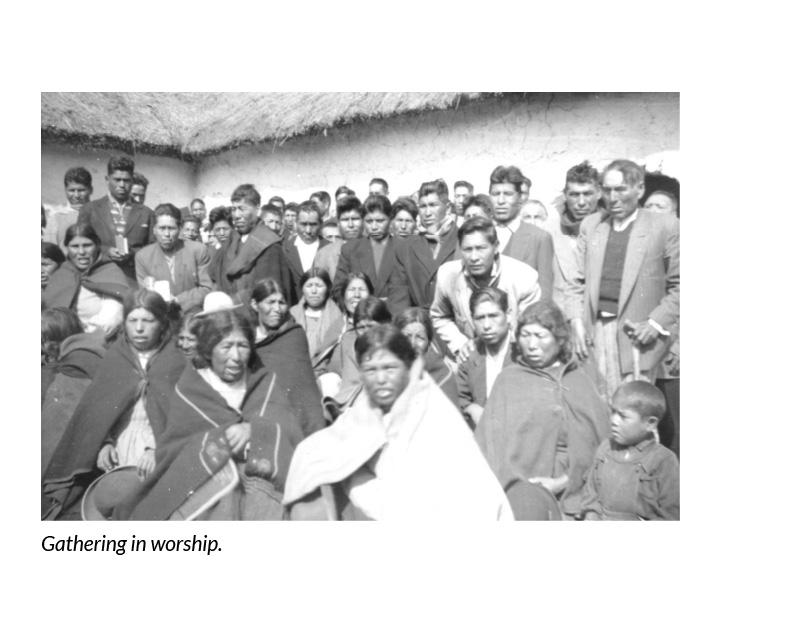
By 1963 there were 17 workers on the field with a number of applications in process. Sadly, however, differences of opinion concerning the Mission’s policy resulted in some resignations during this decade.
The difficulties of the 1960s were not eased in the face of opposition from some Peruvians. For example, the work in Yanapata had faced opposition since its inception in the 1950s, and this continued into the 1960s. On no fewer than three occasions the church building was destroyed, forcing the congregation to travel to Yunguyo to worship.
But during this decade, God’s hand was still at work. The existing medical work, carried out by Nurse Sloan since the early 1940s, was further strengthened by the arrival of the Hughes family. Peter Hughes was the first Mission Medical Doctor, and the Mission also made good use of Lila Marks’s and Mary Sloan’s gifting and skills in nursing and midwifery. It appears that “the health care provided in Urubamba, Ilave, in the mountains around Yunguyo, and in the Puno hospital was valuable in itself as a demonstration of the love and compassion of Christ.”2 This medical work took place alongside an ever-growing and strengthening Union of Baptist Churches, in which there was much evangelistic zeal and success.
A new left-wing nationalist government came to power in Peru in 1968. This had an impact on church life during the 1970s. Some of the Peruvian believers reacted against what they perceived to be the foreign influence of the missionaries, leading to some churches in the Puno region leaving the Union. This damaged personal relationships, and left wounds which took a long time to heal.
Changes were afoot among the Mission staff too. The McVickers, Reids and Blacks had retired after long service, and for family reasons, the Hughes family also returned home. This brought an end to the medical work in the clinic in Ilave. But new workers arrived: Moira Richmond, Molly Allen and Mavis Cooke. These women, like others before and since, served faithfully, bravely and often in remote, vulnerable situations. For example, they gained access to the prison in Puno. Andrew Lovell arrived in December 1971, Rachel Ropp in February 1974, Pam Brown joined from the Strict Baptist Mission in 1976 and Desmond Creelman in July 1977.
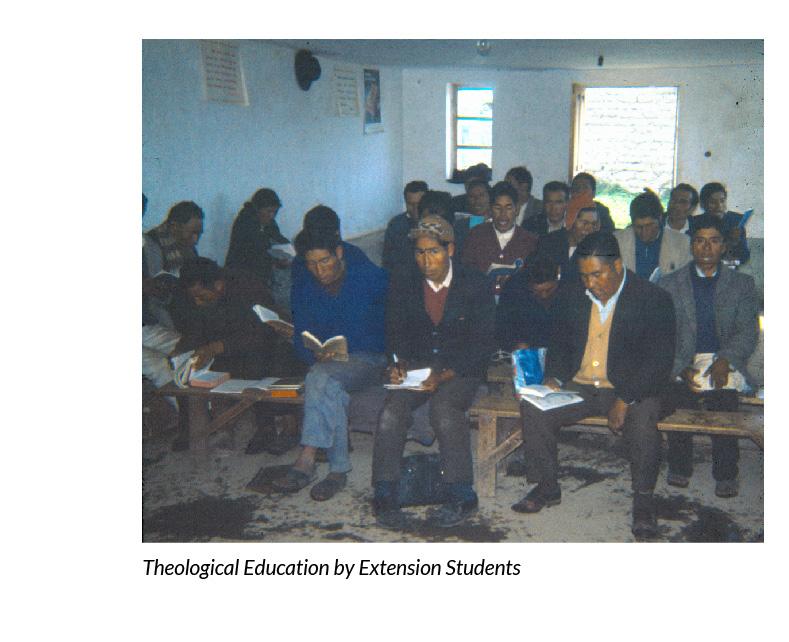
While the Mitchells continued their evangelism and church planting work in Moquegua and the Sloans in Ilave and later in Tarata, Andrew Lovell developed the new Theological Education by Extension programmes which helped to train local believers for ministry. He and his new wife, Rachel (née Ropp) also learned Aymara to enable them to communicate the gospel more effectively. The work of the summer camps in Ilo and the annual conventions also saw much blessing during the 1970s.
In 1977 the Irish Baptist Home Mission (1888) and the Irish Baptist Foreign Mission (1924) amalgamated to become Baptist Missions.
1980's &1990's
Despite the arrival of the Bowers, Brews, Flemings and Lovells, the 1980s proved to be a decade of loss for Baptist Missions. Initially, this was felt with the retirement of the Sloans in 1988. They had both been in Peru for over 30 years and had earlier received recognition for their long service at the summer camps in 1984.
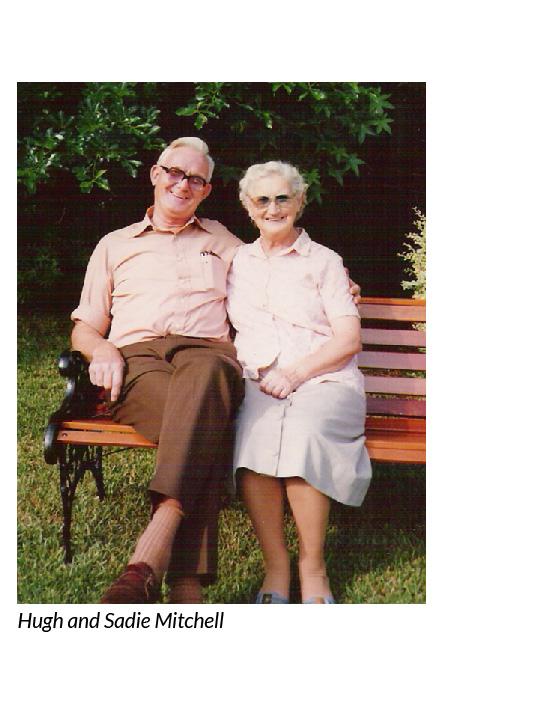
The loss of the Sloans was compounded in 1989 with the deaths of Hugh and Sadie Mitchell. A few months after celebrating the 21st year of Camps, which Hugh was instrumental in starting, the couple tragically died in a car accident on the 5th of June 1989.
After the losses of the 1980s, the 1990s proved to be a decade of new beginnings. As several families ended their time in Peru, (Creelmans, Flemings and Lovells), a fresh group took over the responsibility in the field (Andersons, Betts, Brews, Campbells, Dormans and Morrows). The Mitchell Memorial School was developed to meet the educational needs of the Baptist Mission workers children. This project commenced in 1990 and opened in July 1991, and was staffed by various teachers sent from Ireland until 1998 when the need for the school declined.
After 1998, the emphasis shifted to the training of leaders for the churches in the Sierra and also the exciting emerging of churches on the coast. The focus of the work largely moved from the Sierra, around Lake Titicaca, to the coastal towns of Tacna and Ilo. This deliberate decision followed the growing population shift from the 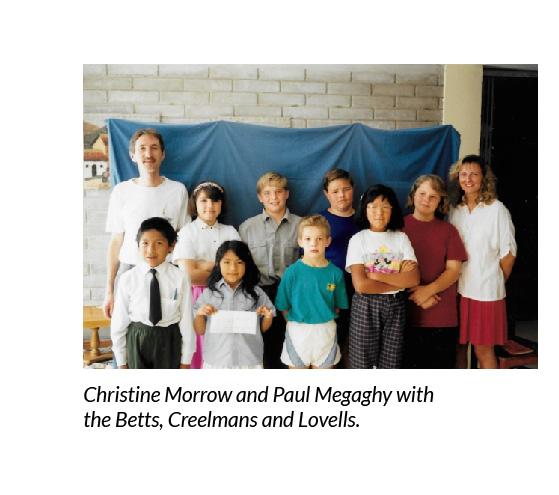 Sierra to the coast. The recent staff changes in the early 1990’s, the medical needs of the workers and the changed relationship with the Union of churches in the Sierra also contributed.
Sierra to the coast. The recent staff changes in the early 1990’s, the medical needs of the workers and the changed relationship with the Union of churches in the Sierra also contributed.
In time, this developed into the church planting strategy which led to the planting of the “de Vida ” churches in Tacna, beginning with Pan de Vida in 1995. This development further increased the need for trained leadership in the new churches.
2000's & 2010's
The new millennium began with the opening of the Baptist Seminary in Tacna under the leadership of Ken Scott. This was a progression of the work started by the Bowers, Brews, Flemings and Lovells. The exciting opportunity to provide biblical teaching and training for Peruvian leaders in local churches led to the arrival of the Murphys, Roycrofts and Williamsons and the development of the 'Seminary At a Distance' (SAD) programme in 2003.
The teaching and training were not reserved solely for church leaders, however. In 2004 the work of the radio ministry 'El Sembrador' began. Three years later this advanced to a radio station that was transmitting Christian teaching, music and interviews 24 hours a day throughout the city of Tacna.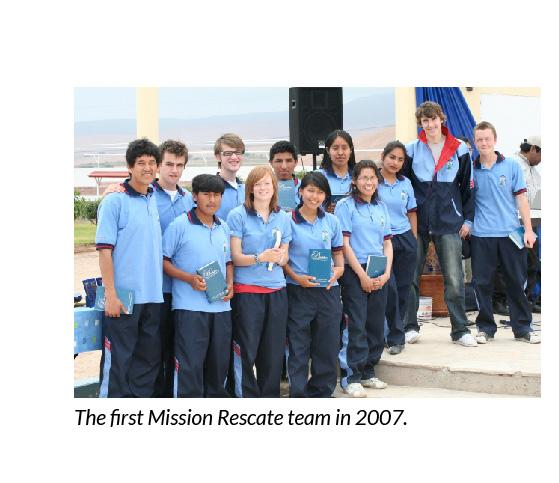
In 2007, the first of four Mission Rescate teams began. These teams were an opportunity for young people from Ireland to join up with Peruvian young people and serve together. This same year saw the opening of a fully equipped Camp and Conference Centre in Ite, just 5 years after the site was initially purchased. This has proven to be a wonderful resource for summer camps, ministry weekends and training. Also based in Ite was El Viaje Incredible (The Amazing Journey) presentation. The displays and literature were translated into Spanish and presented in schools, marketplaces and churches in the years that followed. Trevor Morrow also brought a team of more than 20 Peruvians to tour many of the churches in the Association and visit various sites in Ireland.
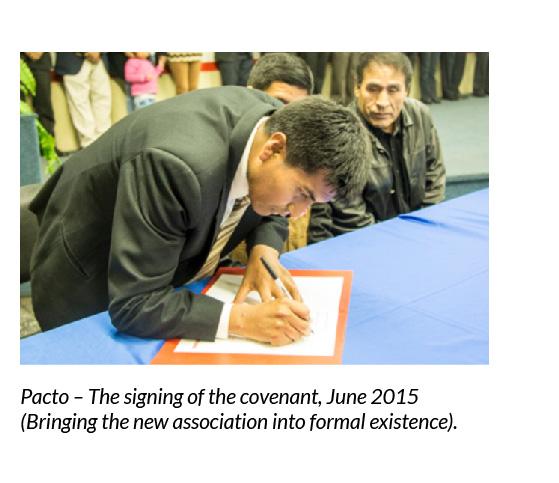
In the 2010’s, new churches continued to be planted, notably in Ilo and Tacna, and an important link established between the Seminary in Tacna and the Irish Baptist College in Moira was formalised in 2013.
The work in Peru has reached a crucial point in time, as we transition to seeing it come increasingly under Peruvian leadership, including local churches. The desire is for the Peruvians themselves to take ownership and responsibility for this gospel ministry. The establishment of the Association of Evangelical Baptist Churches in southern Peru in June 2015 was a small, yet significant step towards this goal.
Looking Ahead
Baptist Missions may well continue to send workers to Peru; after all “the worldwide church will never outgrow the need for cross-cultural expatriate missionaries because the church in every culture has its blind spots.”3 Yet, increasingly it will be to work under the Peruvian Association, serving where the churches determine help is needed. Lord-willing, the aim is to handover full responsibility for the work in Peru to the Association by 2027, one hundred years after the work was started. However, strategic changes must be implemented now if that day is to arrive. Much prayer, wisdom, grace and flexibility will be needed along the way.
As the work continues in Peru, we are assured that the same God who has worked through Baptist Missions for the past 90+ years will continue to guide us in the task of “Proclaiming Christ & Planting Churches” in the land that was once known as “Darkest Peru”. Praise God His gospel light has shone into many hearts and continues to do so today.
If you want to be part of what the Lord is doing in Peru, perhaps you could learn a little more about the work and commit to praying for and supporting those currently working there, whether Baptist Missions workers from Ireland or local Peruvian workers. For those who knew very little of Peru before and are enthused to learn more, the best place to start would be with Andrew Reid’s book By Divine Coincidence. There are many smaller booklets such as Baptist Camps, Peru: Twenty-Five Years of Evangelism and His Place for Me: The Story of Sam and Mary Sloan which are also helpful.
We hope that as you have read, you will have joined us in worshipping God for His kindness during these past 90+ years of Baptist Missions role in the gospel work in Peru. Above and beyond all of this, however, is the hope and prayer that God will continue to build His church in Peru.
To God be the glory!
————————————
1. Andrew Reid, By Divine Coincidence, Association of Baptist Churches in Ireland, Belfast, 2000, pg.70.
2. Andrew Reid, By Divine Coincidence, Association of Baptist Churches in Ireland, Belfast, 2000, pg. 177.
3. Andrew Reid, A History of the Irish Baptist Foreign Mission (1924-1977), unpublished thesis, pg. 37.
Text adapted from Peru 90, to order your free copy please click here to contact Joanne at the office.



